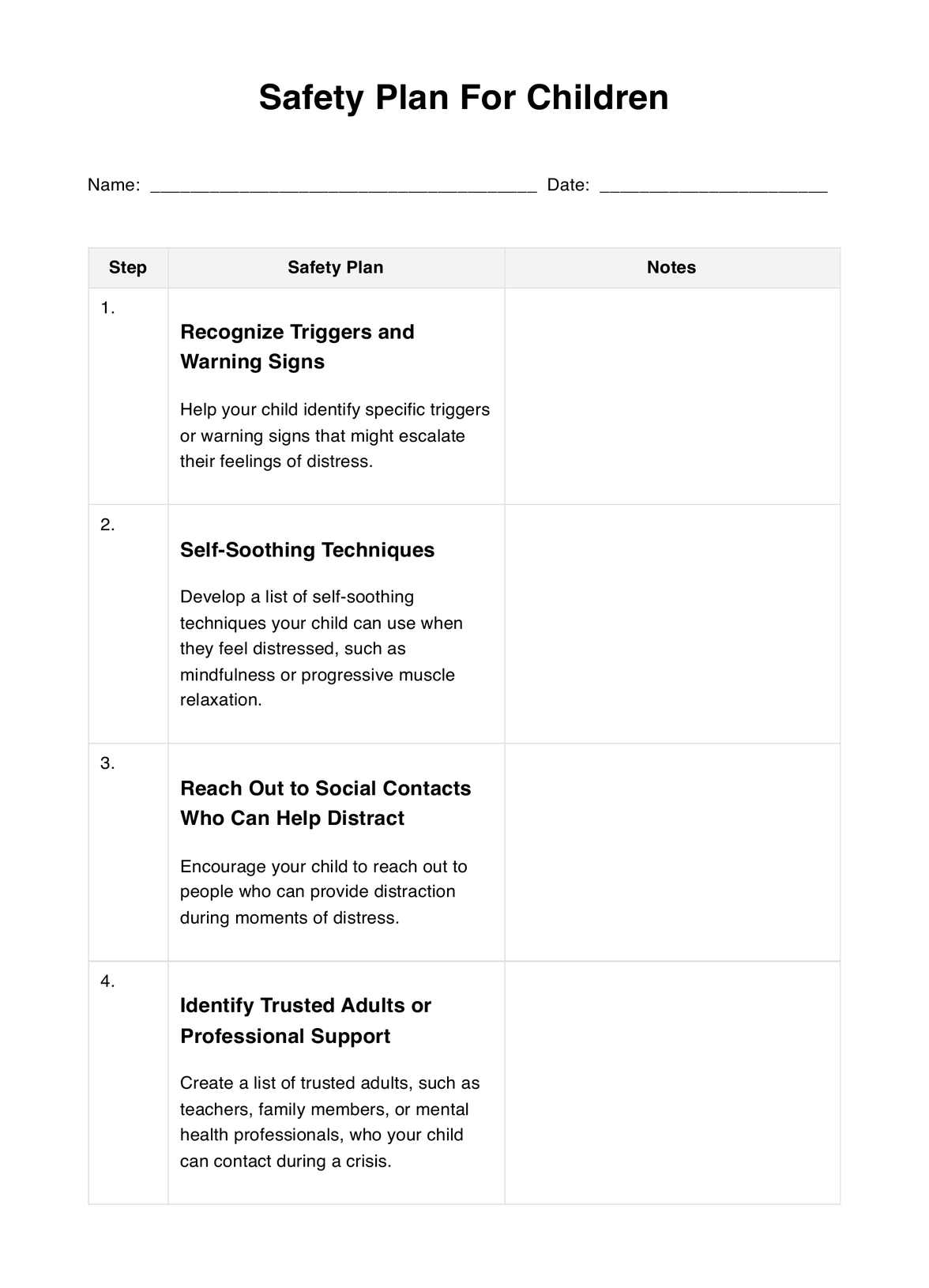Parents, guardians, teachers, and mental health professionals commonly use the Safety Plan for Children.

Safety Plan For Children
Discover our comprehensive guide to crafting a Safety Plan for Children, tackling various scenarios, including domestic violence, fire safety, and more. Download your free PDF today.
Use Template
Safety Plan For Children Template
Commonly asked questions
You use the Safety Plan for Children in scenarios where a child's safety is at risk, such as domestic violence, fire emergencies, or cases of abuse.
The Safety Plan for Children is a guide for children and adults to follow during crises, containing critical information such as contacts for help, self-soothing techniques, and strategies for various emergencies.
EHR and practice management software
Get started for free
*No credit card required
Free
$0/usd
Unlimited clients
Telehealth
1GB of storage
Client portal text
Automated billing and online payments











